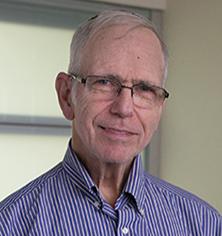Joel Gersten
Professor
Building
Marshak Science Building
Office
311C
Phone
212-650-7314
Fax
212-650-6940

Joel Gersten
Profile
- Columbia University 1963-1967 Teaching Asst.
- Bronx Community College 1966-1968 Lecturer
- City College of NY 1970-present Professor
- Lamont Geological Obser. 1960-1962 Research asst.
- Bell Telephone Labs. 1968-1970 Member of the technical staff
- Bell Telephone Labs. 1971-1973 Part time consultant
- Institute for Advanced Studies, Hebrew Univ. 1978-1979 Fellow
- Graduate Center CUNY 1982-1990 Executive Officer, Doctoral Program in Physics
- City College of NY 1995-1999 Chairman, Department of Physics
- City College of New York 2001-2004 Associate Dean of Science (Acting)
Education
B.S., The City College; M.A., Columbia Univ., Ph.D.
Research Interests
- Condensed Matter Theory
- Materials Science
- Surface Science
- Sonoluminescence
- Interaction of Light with Matter
I am currently interested in theoretical condensed matter physics, surface physics, interaction of light and charged particles with solids, and STEM (Science, Technology, Engineering and Mathematics) education.
My most recent projects are the following:
a) I found an interesting electromagnetic effect relating to electric powered trains that produce radio interference in waves that move with the trains. I worked out an explanation to this phenomenon by finding a new analytic solution to Maxwell's equations. The abstract states, "Inteferometry using a broadband noise source and a narrow band receiver is studied. It is shown that by employing interferometry kinematic information relating to trains may be obtained using only a radio receiver and a watch".
b) Theory of fluorophore-metallic surface interaction. This technique, under the name Gersten-Nitzan theory, is employed by biologists to map out the structure of biological molecules.
c) A theory is developed for resonant energy transfer between donor and acceptor molecules outside of a solid coated with a thin film. The energy transfer rate is expressed in terms of a second-rank tensor, allowing one to consider all possible orientations of the transition dipole moments of the molecules. The theory of images is employed to construct expressions valid in the near-field approximation. This theory is extended to the full electrodynamic theory valid over all distances. Connections are made between the expressions for the image charges and the Fresnel coefficients from optics. It is found that the energy transfer rates are strongly influenced by surface resonances, including the interfacial surface plasmons and the two-dimensional plasmon of a metallic film. The possibility of the film supporting Fabry-Perot resonator modes is discussed
d) .An elementary theorem relating to an obtuse triangle with an angle of 120o is used to express reciprocals of sums or differences of reciprocals of numbers in a geometric manner. Applications in physics and mathematics are given in this paper.
e) The rationale for treating area as a vector quantity is related to a basic theorem in solid geometry. Applications are made to two topics in physics. The first involves classical physics and basic fluid statics. The second involves quantum mechanics and non-commutative geometry.
f) An extension of Kepler's third law to hyperbolic trajectories associated with either the gravitational problem or Rutherford scattering is proposed. This extension leads to the same formulas as the original Kepler third law.
g) A problem involving the response of a model solid to an electromagnetic field was studied. The problem was periodic in both space and time, so both Bloch's theory and Floquet's theory were simultaneously applicable.
Publications
Joel Gersten Interferometry from a moving noisy source, American Journal of Physics, 78(3), 258-263 (2010).
CCNY Authors assigned: Joel Gersten
Joel I. Gersten Interferometry using a noisy moving source, American Journal of Physics, 78 (3), 258-263 (2010).
CCNY Authors assigned: Gersten
Joel Gersten Area as a vector quantity in classical and quantum physics, Proceedings of the Synergy in STEM Bringing Mathematics, Physics and, New York City Technology College, Brooklyn, NY (2009).
CCNY Authors assigned: Joel Gersten
Joel Gersten On the geometric representation of the reciprocal of the sums and differences of recipricals, Proceedings of the Conference Synergy in STEM Bringing Mathematics,, New York City Technology College, Brooklyn NY (2009).
CCNY Authors assigned: Joel Gersten
Masovic D. R., Belic M. R., Gersten J. I. Solid in the kicking laser field, Physics Letters A, 373 (36), 3289-3295 (2009).
CCNY Authors assigned: Gersten
Gersten Joel I. Area as a vector quantity in classical and quantum physics, Proceedings of the Synergy in STEM Bringing Mathematics, Physics and Engineering Together, edited by R. Kezarshivili, and J. Vazquez-Poritz, Brooklyn, New York,, Oct. 30, 2009 (2009).
CCNY Authors assigned: Gersten
Gersten Joel I. Fluorescence resonance energy transfer near thin films on surfaces, Plasmonics, 2, 65-77 (2007).
CCNY Authors assigned: Gersten
"The Physics and Chemistry of Materials", (with F. W. Smith), (John Wiley and Sons, New York, June 2001).
"Solution Manual for The Physics and Chemistry of Materials", (with F. W. Smith), (John Wiley and Sons, New York, 2002).